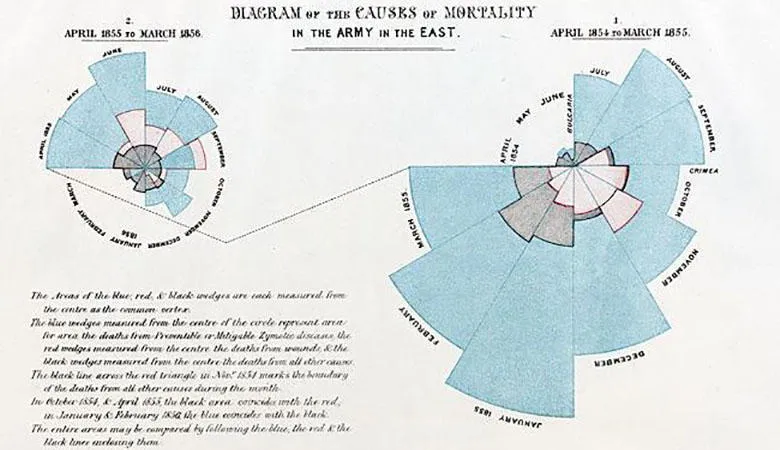Nurse staffing levels linked to patient satisfaction
The number of nurses on a ward is strongly linked to how favourably patients viewed their hospital care, a new study published...
12 May 2018
Twelfth of May marks International Nurses Day, celebrated on the anniversary of Florence Nightingale’s birthday.
Twelfth of May marks International Nurses Day, celebrated on the anniversary of Florence Nightingale’s birthday.
Widely regarded as the founder of modern nursing, Nightingale ‘mesmerised’ the world, according to Anne Marie Rafferty, Professor of Nursing Policy at King’s and expert on Florence Nightingale.
Florence Nightingale in 1886 (centre, seated) with a group of Nightingale nurses and her brother-in-law Sir Harry Verney.
‘The Lady of the Lamp’
Known as ‘the Lady of the Lamp’ for her work in military hospitals in the Crimea, Nightingale returned to England in 1856 to an outpouring of public generosity. This fund, which would amount to several million pounds in today’s money, enabled her to establish a nursing school at St Thomas’ Hospital in 1860.
The world’s first professional school of nursing, this would be the direct forebear of King’s current Florence Nightingale Faculty of Nursing & Midwifery.
‘The world was mesmerised by the heroine of the Crimea not just because of her prodigious gifts, gritty determination and relentless focus on her goal, but also because of how she communicated her sense of authority to her audience,’ Professor Rafferty explains.
Florence Nightingale (1820-1910) the English nurse and hospital reformer. The engraving shows her at Scutari, in the military hospital, directing the care of patients during the Crimean war. Her experiences there convinced her of the need to take a sanitarian approach to hospital design. Hitherto hospitals had actually encouraged the spread of disease through overcrowding, poor ventilation and bad drains. She publicized the miasma theory of disease while advocating light and airy hospitals with clean staff and good sanitary engineering. Engraving by Greatbach after J. Hind.
Charity records and pie-charts
‘At the age of 70 she became one of the first people to produce a “charity record” – a recording of her voice on Thomas Edison’s sound machine – to support the fund for destitute veterans of the Crimea’s Charge of the Light Brigade.’
Nightingale also had a great gift for drawing forth drama from data, recognising that every picture tells a story. She was constantly innovative in the way she presented her arguments visually, and is credited with developing a form of pie-chart now known as the polar area diagram.
Example of a polar area diagram, showing ‘The Causes of Mortality in the Army in the East’.
